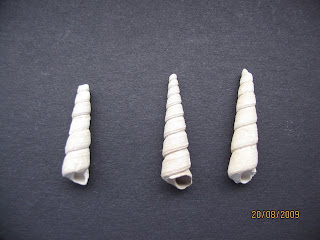There's no let up to the attacks on the integrity of the cliffs. What has been a relatively new assault is now well established it seems. Mining bees in some quantity have recently colonised the soft sandy layers in the cliff-face. I noticed these last year and they've emerged!
 No being well-up on the mining bees, I asked Bryan, our local entomologist what the species was. He informed me that it's the Ivy Bee Colletes hederae and is the latest of the mining bees to emerge, feeding, as the name suggests on Ivy Hedera helix which comes into flower this time of year. The Ivy Bee's story is fascinating. Known in Europe, it was first seen in a colony at Winspit in Dorset in 2001 from where it has spread west and east along the coastline and is now established from Cornwall to Kent, and inland to Avon and Hampshire.
No being well-up on the mining bees, I asked Bryan, our local entomologist what the species was. He informed me that it's the Ivy Bee Colletes hederae and is the latest of the mining bees to emerge, feeding, as the name suggests on Ivy Hedera helix which comes into flower this time of year. The Ivy Bee's story is fascinating. Known in Europe, it was first seen in a colony at Winspit in Dorset in 2001 from where it has spread west and east along the coastline and is now established from Cornwall to Kent, and inland to Avon and Hampshire.
 The naff picture doesn't do justice to the pale-banded furry little critter so I suggest you check-out the Bees Wasps and Ants Recording Society's website for more information and current distribution maps http://www.bwars.com/ .
The naff picture doesn't do justice to the pale-banded furry little critter so I suggest you check-out the Bees Wasps and Ants Recording Society's website for more information and current distribution maps http://www.bwars.com/ .
The latest bit of cliff to break free (it's only a matter of time and loads of rain that'll send it slipping down) was above a sub-colony of the above. Are the two connected?

Hard hats at the ready if you're taking the dog for a walk and all you bloggers up-north keep your eyes peeled . BWARS needs your help!






 As a taster, here's some of the more unusual species (for urban verges) found so far: lady's smock, bugle, chamomile, heath and lady's bedstraw and autumn lady's tresses (see above).
As a taster, here's some of the more unusual species (for urban verges) found so far: lady's smock, bugle, chamomile, heath and lady's bedstraw and autumn lady's tresses (see above).